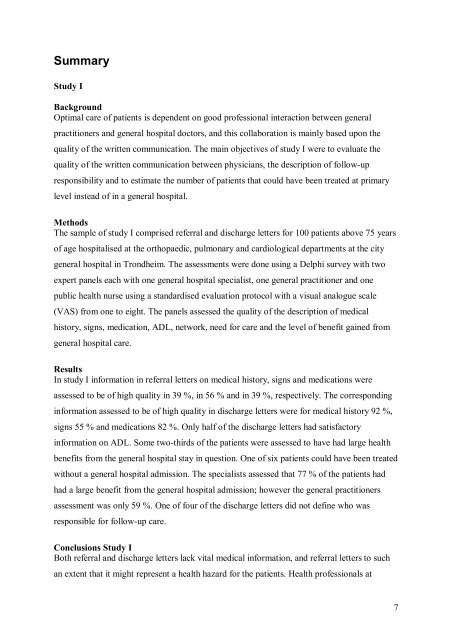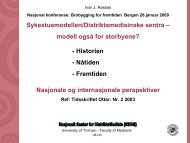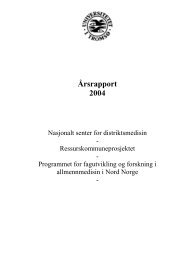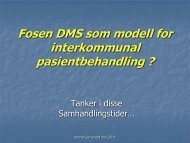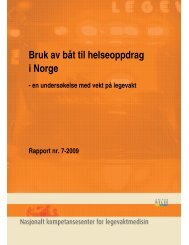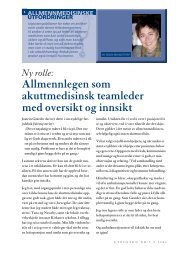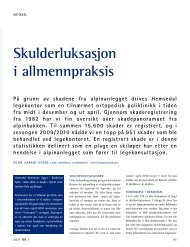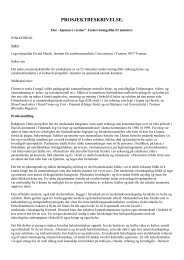Helge Garåsen The Trondheim Model - NSDM
Helge Garåsen The Trondheim Model - NSDM
Helge Garåsen The Trondheim Model - NSDM
You also want an ePaper? Increase the reach of your titles
YUMPU automatically turns print PDFs into web optimized ePapers that Google loves.
Summary<br />
Study I<br />
Background<br />
Optimal care of patients is dependent on good professional interaction between general<br />
practitioners and general hospital doctors, and this collaboration is mainly based upon the<br />
quality of the written communication. <strong>The</strong> main objectives of study I were to evaluate the<br />
quality of the written communication between physicians, the description of follow-up<br />
responsibility and to estimate the number of patients that could have been treated at primary<br />
level instead of in a general hospital.<br />
Methods<br />
<strong>The</strong> sample of study I comprised referral and discharge letters for 100 patients above 75 years<br />
of age hospitalised at the orthopaedic, pulmonary and cardiological departments at the city<br />
general hospital in <strong>Trondheim</strong>. <strong>The</strong> assessments were done using a Delphi survey with two<br />
expert panels each with one general hospital specialist, one general practitioner and one<br />
public health nurse using a standardised evaluation protocol with a visual analogue scale<br />
(VAS) from one to eight. <strong>The</strong> panels assessed the quality of the description of medical<br />
history, signs, medication, ADL, network, need for care and the level of benefit gained from<br />
general hospital care.<br />
Results<br />
In study I information in referral letters on medical history, signs and medications were<br />
assessed to be of high quality in 39 %, in 56 % and in 39 %, respectively. <strong>The</strong> corresponding<br />
information assessed to be of high quality in discharge letters were for medical history 92 %,<br />
signs 55 % and medications 82 %. Only half of the discharge letters had satisfactory<br />
information on ADL. Some two-thirds of the patients were assessed to have had large health<br />
benefits from the general hospital stay in question. One of six patients could have been treated<br />
without a general hospital admission. <strong>The</strong> specialists assessed that 77 % of the patients had<br />
had a large benefit from the general hospital admission; however the general practitioners<br />
assessment was only 59 %. One of four of the discharge letters did not define who was<br />
responsible for follow-up care.<br />
Conclusions Study I<br />
Both referral and discharge letters lack vital medical information, and referral letters to such<br />
an extent that it might represent a health hazard for the patients. Health professionals at<br />
7


